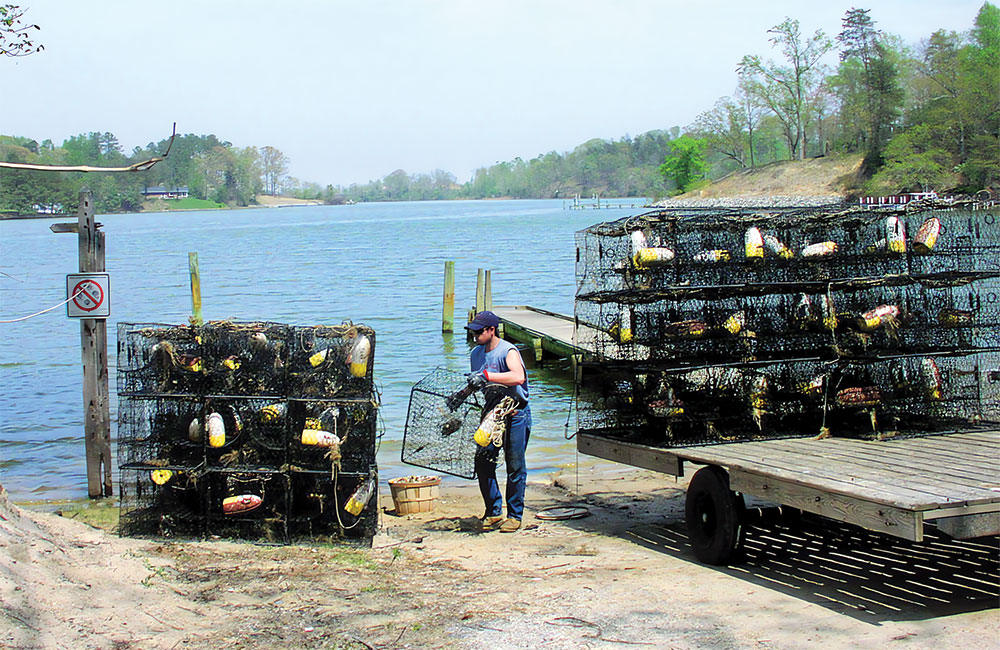
Social media brouhaha over misplaced pots
calls to mind story about their late inventor
§ 28.2-710. It is unlawful (in Virginia waters) to place or maintain any crab, eel, or fish pot in a navigable channel which has navigation aids installed or approved by any agency of the United States government or in any portion of a government marked channel of a river, bay, estuary, creek or inlet.
Virginia law makes it clear that crab pots cannot be set in navigable channels in rivers, creeks or coves that have “navigational aides” installed.
Recently, the question was asked on an Urbanna social media page concerning the legality of setting pots in the channel on Urbanna Creek. The Virginia code spells it out clearly that it is illegal to set pots in the creek’s channel and in any other creek in Middlesex County that has government installed channel markers.
Crab pot background interesting
Inventor of the crab pot, the late Benjamin F. Lewis of Harryhogan, Va., invented the first crab pot in the 1920s. The inventor obtained two patents on the pot, one in 1928 and the second in 1938. The second patent design is almost identical to pots used today.
One would think that with all the pots used on Chesapeake Bay that Lewis would have made a fortune off his invention. However, that was not the case. The simplicity of making pots and its enormous popularity across the broad expanse of Chesapeake Bay kept that from happening.
When the pot came out, its use spread like wildfire from one end of the bay to the other. The late Francis Kines and Marston Krentz who lived down the road from Lewis and watched him build pots, said in a 1987 interview with this reporter, “He would have been a millionaire in one year if he could have collected the $4 per 50 pots that he was allowed to collect,” said Kines.
To keep up with the rapid growth of the use of pots, Lewis purchased a Model A Ford that his son Harvey used to travel around the bay to collect royalties on his father’s invention. Legal pots were tagged with a metal tag with Lewis’ patent number 2,123,471 embossed on the tag.
“It was an impossible task,” said Krentz. “He wasn’t able to collect a 10th of what was out there. There were so many people using them and they were so easy to make.”
“If he could have set up a factory and started mass producing them,” said Krentz, “then maybe he would have made a lot more money. Let me tell you though, that old man put Virginia and Chesapeake Bay blue crab on the map. We’d probably still be out there using a trotline for a couple bushels (of crabs) a day if it wasn’t for him.”
There's more to this story...
Are you a subscriber? Log in
Many more news articles, photos and ads are available
only to those who subscribe to our
printed newspaper or our online e-Edition.
Pick up a copy or Subscribe today!
| e-Edition | Printed version |



